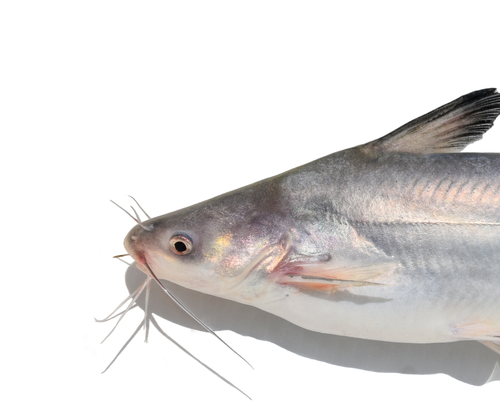
Blue Catfish
The Atlantic bluefin tuna (Thunnus thynnus) is a highly migratory, large pelagic fish renowned for its size, speed, and commercial value. It's a top predator in the marine ecosystem and plays a critical role in maintaining the balance of ocean life. This species has been prized for centuries, especially in Japanese cuisine.
20 25 years
Lifespan
165 cm
Length
Least Concern
Conservation Status
15 km/h
Swimming speed
Omnivorous, Scavengers
Diet
Local Migration
Migration
Appearance Overview
The Atlantic bluefin tuna is a large, streamlined fish with a metallic blue body and a silvery underside.
Coloration
Dark metallic blue above, silvery white below
Body Shape
Torpedo-shaped, built for speed and endurance
Fins
Two dorsal fins, the first being depressible; a series of small finlets behind the second dorsal and anal fins
Length
Up to 13 feet (4 meters), commonly around 6.5 feet (2 meters)
Weight
Up to 2,000 lbs (900 kg), commonly around 550 lbs (250 kg)
Diet
Carnivorous, feeding on a variety of fish, squid, crustaceans, and eels.
Feeding Behavior
Highly active predator, hunts by sight and uses its speed to chase down prey. Often feeds cooperatively, herding and surrounding prey.
Social Behavior
Forms large schools, especially during migration and spawning. Schools may be segregated by size.
Commercial Relevance
Extremely high value, particularly in the sushi and sashimi markets, where it is considered a delicacy. Overfishing has significantly impacted populations.
Conservation measures
Subject to international fishing quotas, minimum size limits, and monitoring programs. Efforts also include tagging and tracking studies to understand migration patterns.
Status
Endangered (IUCN)
Threats
Overfishing is the primary threat. High demand for sushi and sashimi drives intense fishing pressure. Bycatch in other fisheries also contributes.
Habitat Distribution
Depth Range
0-1,000 meters (0-3,280 feet), typically found in surface waters to depths of 200 meters.
Geographic Range
Western and Eastern Atlantic Ocean, Mediterranean Sea, and formerly the Black Sea.
Preferred Environment
Pelagic, open ocean waters; prefers temperate and subtropical waters; undertakes long migrations across the Atlantic.
Reproduction and Life Cycle
Breeding Habits
Spawns in warm waters, primarily in the Gulf of Mexico and the Mediterranean Sea. Spawning occurs in spring and summer.
Development Stages
Eggs hatch into larvae, which develop rapidly. Juveniles grow quickly, feeding voraciously. Growth rates vary depending on location and food availability.
Fecundity
Highly fecund; a large female can produce up to 30 million eggs per spawning season. Eggs are pelagic, floating freely in the water.
Maturity Age
Reaches sexual maturity at around 4-5 years in the western Atlantic and 8 years in the eastern Atlantic.
Faqs about Blue Catfish
Where are Atlantic bluefin tuna found?
Atlantic bluefin tuna are found in the western and eastern Atlantic Ocean, and the Mediterranean Sea.
How long do Atlantic bluefin tuna live?
Atlantic bluefin tuna can live up to 40 years.
What is the biggest threat to Atlantic bluefin tuna?
The biggest threat is overfishing due to high demand in the sushi market.
What do Atlantic bluefin tuna eat?
They primarily feed on fish, squid, and crustaceans.
When do Atlantic bluefin tuna reach maturity?
They reach maturity at around 4-8 years of age, depending on their location.
Is fishing for Atlantic bluefin tuna regulated?
Yes, strict regulations and quotas are in place to manage bluefin tuna fishing.
What is unique about Atlantic bluefin tuna behavior?
They are known for their incredible speed and long migrations across the Atlantic Ocean.
How many eggs can a female bluefin tuna lay?
A female can release up to 30 million eggs per spawning season.
Copyright @ Nature Style Limited. All Rights Reserved.
 English
English